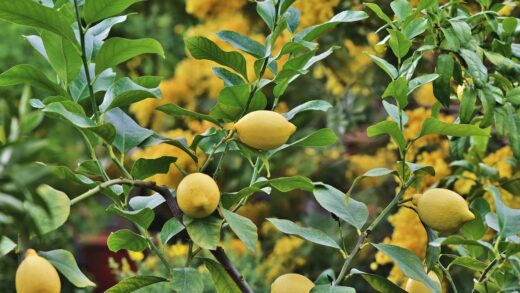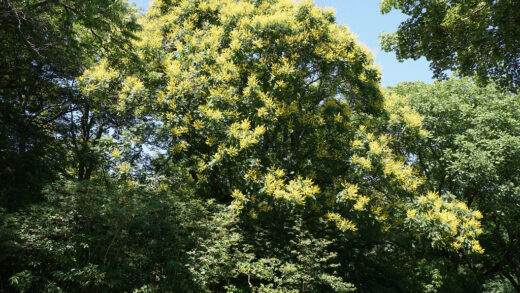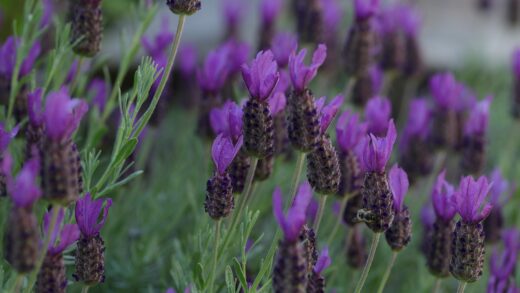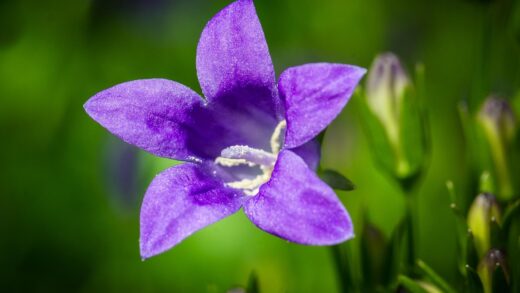The successful overwintering of the wood anemone is a testament to its remarkable adaptation to the temperate woodland environment. This perennial is perfectly equipped by nature to not only survive the cold, dormant season but to actively utilize it as a necessary part of its life cycle. For the gardener, winter care is not about intensive intervention but rather about providing the right conditions and protections that align with the plant’s natural strategy. Understanding what is happening beneath the soil surface during these cold months is key to ensuring the plant emerges with vigor in the spring. The primary goals are to protect the shallow rhizomes from extreme temperature fluctuations and excessive moisture, allowing them to rest undisturbed until the first signs of warmth signal a new season of growth.
The wood anemone survives the winter as a dormant underground rhizome. This fleshy, horizontal stem, hidden just below the soil surface, contains all the stored energy and genetic information needed to produce a full flush of leaves and flowers the following spring. After the foliage dies back in the summer, the rhizome enters a state of deep dormancy. This dormancy is not just a passive waiting period; it is a crucial phase that requires a period of cold temperatures, a process known as vernalization, to trigger the hormonal changes necessary for subsequent flowering. Without this winter chill, the plant would fail to bloom properly.
Therefore, the main task for the gardener is not to shield the plant from the cold, but to moderate the environment in which it experiences that cold. The greatest dangers during winter are not the low temperatures themselves, but the cycles of freezing and thawing, and the risk of the rhizomes sitting in cold, waterlogged soil. These conditions can physically damage the rhizome structure or lead to rot, from which the plant cannot recover. Providing a protective layer of mulch and ensuring the site has excellent drainage are the cornerstones of effective winter care.
This period of quiet rest is also a time to be mindful of the plant’s presence, even though it is invisible. The shallow nature of the rhizomes makes them vulnerable to physical disturbance. Any digging, planting, or heavy foot traffic in the area during the autumn and winter can easily break or damage the brittle rhizomes, destroying the buds that hold the promise of spring flowers. Marking the location of your anemone patch is a simple but effective way to prevent such accidental damage during routine garden maintenance.
The role of dormancy
Dormancy is a fascinating and vital survival mechanism for the wood anemone. It is an evolutionary strategy that allows the plant to endure the unfavorable conditions of winter, such as freezing temperatures, reduced light levels, and a lack of available water. During the summer, after the foliage has died back, the plant enters a quiescent state. As autumn progresses and temperatures drop, it enters a deeper state of endodormancy, where its metabolic processes slow to an absolute minimum. The plant is essentially in a state of suspended animation, conserving the energy it so diligently stored in its rhizome during the spring.
More articles on this topic
This period of cold is not merely something to be endured; it is a requirement. Wood anemones need a prolonged period of chilling, typically several weeks of temperatures below five degrees Celsius, to satisfy their vernalization requirement. This cold exposure initiates critical physiological processes within the rhizome, priming the dormant buds for growth. It is a natural clock that prevents the plant from breaking dormancy too early during a mild spell in autumn or winter, ensuring it only emerges when the conditions of spring are truly underway. This is why wood anemones are so well-suited to temperate climates with distinct seasons.
The gardener’s role is to facilitate this natural process. There is no need for complex protective structures or for lifting the rhizomes for indoor storage, as one might do for tender bulbs. Doing so would deprive the plant of the essential chilling period it needs. The best approach is to leave the rhizomes in the ground and trust in their inherent hardiness. Their ability to withstand freezing temperatures is remarkable, provided they are in the right soil conditions.
Understanding the importance of this cold, dormant period helps the gardener to appreciate the plant’s annual rhythm. It highlights that the life of the plant does not stop when it disappears from view. The winter months are a time of quiet preparation, a necessary reset that builds the potential for the spectacular floral display to come. Respecting this period of rest is as crucial as providing water and nutrients during the growing season.
The importance of mulching
Applying a layer of organic mulch in the late autumn is the single most important practical task in the winter care of the wood anemone. This practice directly addresses the main threats the plant faces during the winter: freeze-thaw cycles and desiccation. A layer of mulch, about five to seven centimeters deep, acts as an insulating blanket over the soil. This insulation helps to keep the soil temperature more stable, protecting the shallow rhizomes from the repeated expansion and contraction of the soil that occurs when it freezes at night and thaws during the day. This heaving action can damage the rhizomes and even push them up to the surface, where they are exposed to the elements.
More articles on this topic
The best materials for mulching are those that mimic the natural leaf litter of a forest floor. Well-rotted leaf mould is the ideal choice, but shredded leaves, fine composted bark, or garden compost are also excellent options. These materials not only provide insulation but also allow for good air and water penetration, preventing the area from becoming overly soggy. They should be applied after the first few light frosts have occurred but before the ground freezes solid. This timing ensures the rhizomes are fully dormant and the mulch can settle in before the harshest winter weather arrives.
In addition to temperature moderation, the mulch also protects the rhizomes from winter desiccation. Cold, dry winter winds can strip moisture from the exposed soil surface, and while the rhizomes are dormant, they can still be damaged if they dry out completely. The mulch layer helps to trap a baseline level of moisture in the soil, preventing this from happening. As an added benefit, as the organic mulch slowly decomposes over the winter and into the spring, it will provide a gentle, slow-release source of nutrients that will be available to the plant as soon as it breaks dormancy.
This annual ritual of mulching is a simple yet profoundly effective way to support the wood anemone’s natural wintering process. It is a low-effort, high-reward activity that provides protection, stability, and nutrition all in one application. It is the perfect way to tuck your plants in for their long winter sleep, ensuring they are safe and sound and ready to burst forth with renewed energy in the spring.
Ensuring proper drainage
While mulch protects the wood anemone from above, proper drainage protects it from below. Good drainage is crucial for successful overwintering, as the combination of cold temperatures and waterlogged soil is a lethal one for the rhizomes. During the winter, when the plant is dormant and not taking up water, any excess moisture in the soil can create anaerobic conditions that promote rot. A rhizome that has rotted over the winter will not be sending up any shoots in the spring.
The foundation for good drainage is laid at the time of planting. Choosing a site that does not have standing water after heavy rains is the first step. If your garden has heavy clay soil, which is prone to becoming waterlogged, it is essential to amend it generously with organic matter and horticultural grit before planting. The organic matter helps to bind the clay particles into larger aggregates, creating channels for water to drain through, while the grit provides additional porosity. Creating raised beds can also be an effective solution in gardens with persistent drainage problems.
Even in well-draining soil, it is important to be mindful of winter water sources. Avoid planting wood anemones in low-lying areas where water naturally collects or at the base of a downspout where they will receive a concentrated flow of water from the roof. During the winter, check the area periodically after heavy rain or snowmelt to ensure that water is draining away effectively and not puddling on the surface for extended periods.
This focus on drainage is particularly important for plants grown in containers. A container left out in the open can quickly become saturated with winter rain, and if the potting mix freezes solid, it can create an impenetrable block of ice that can suffocate and damage the rhizomes. Ensure that container-grown plants are in a potting mix with sharp drainage, and consider moving the pots to a more sheltered location, such as under the eaves of a house or into a cold frame, where you can control the amount of moisture they receive over the winter.
Winter care in containers
Wintering wood anemones in containers requires a bit more attention than for those planted in the garden. The soil in a pot is more exposed to the elements, meaning it can freeze more quickly and more solidly than the ground. While the rhizomes need the cold, being frozen in a solid block of ice within a confined pot can be detrimental. The main goal is to protect the pot and its contents from the extremes of winter weather, particularly the combination of excessive wetness and deep freezing.
One of the best ways to protect container-grown plants is to move them to a sheltered location for the winter. An unheated greenhouse, a cold frame, or even a spot against the wall of the house under an overhang can provide enough protection to moderate the conditions. This prevents the potting soil from becoming saturated with winter rain and then freezing solid. The aim is not to keep the plants warm, but to keep them on the drier side and protect them from the harshest temperature fluctuations.
If you cannot move the pot, you can provide insulation to protect the rhizomes. Wrapping the outside of the container with bubble wrap or burlap can help to buffer the roots from the coldest temperatures. You can also group several pots together to create a shared microclimate. Another technique is to “plunge” the pot, which involves sinking the entire container into a vacant spot in a garden bed so that the surrounding soil provides natural insulation. Applying a layer of mulch on top of the soil in the pot, just as you would for garden plants, is also highly recommended.
Watering during the winter should be done very sparingly, if at all. The goal is simply to prevent the potting mix from becoming completely desiccated. In most cases, the ambient humidity and any incidental moisture will be sufficient. If the pot is in a very dry location, such as a rain-sheltered porch, check it once a month and provide just a splash of water if the soil is bone-dry. By taking these few extra steps, you can successfully overwinter your containerized wood anemones, ensuring they have the conditions they need to rest well and return with a beautiful display in the spring.




















